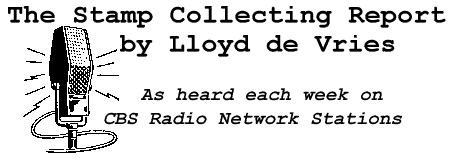
Download this report as an MP3 sound file.
It's good to be the king ― sometimes.
The Stamp Collecting Report, I'm Lloyd de Vries.
While Franklin Roosevelt's Postmaster General in the early 1930s, James Farley would get
the first sheets of each stamp right off the presses.
"But the stamps were not gummed, the way you would buy them in the post office ― they
had no sticky on the back ― and no perforations to separate them." :07
says National Postal Museum assistant curator Daniel Piazza. Farley gave extra copies of
these special sheets to his friends... to frame and hang on their walls as decorations.
"The gum on the back and the perforations got in the way of that and they didn't look so
nice in the frame. So he thought he was just doing little political favors so they could
have a conversation piece in their office." :10
Collectors couldn't buy stamps in this format....and when these special versions started
showing up in the marketplace, the collectors were angry.
"When they found out it came straight from the Roosevelt administration, some of the
highest-level cabinet officials in the administration, it precipitated a scandal." :08
Piazza says the Postmaster General didn't understand what was wrong.
"He wasn't a stamp collector, and so he didn't really, when the scandal broke, quite grasp it
or respond to it, I think, in the way that stamp collectors wanted or expected him to. But
FDR got it." :10
Roosevelt WAS a stamp collector. The solution was to print some of these special sheets of
stamps, and sell them to the public.
Today, these special printings, for 20 issues, are known as "Farley's Follies" and the
National Postal Museum has 15 of the 20 sheets that started the furor.
I'm Lloyd de Vries of The Virtual Stamp Club. For more on stamps and stamps collecting,
visit virtual-stamp-club-dot-com.
----------------------------------------------------------
Go to Previous Report
Go to Next Report
Go to Report Index
Return to Virtual Stamp Club Home Page
|

